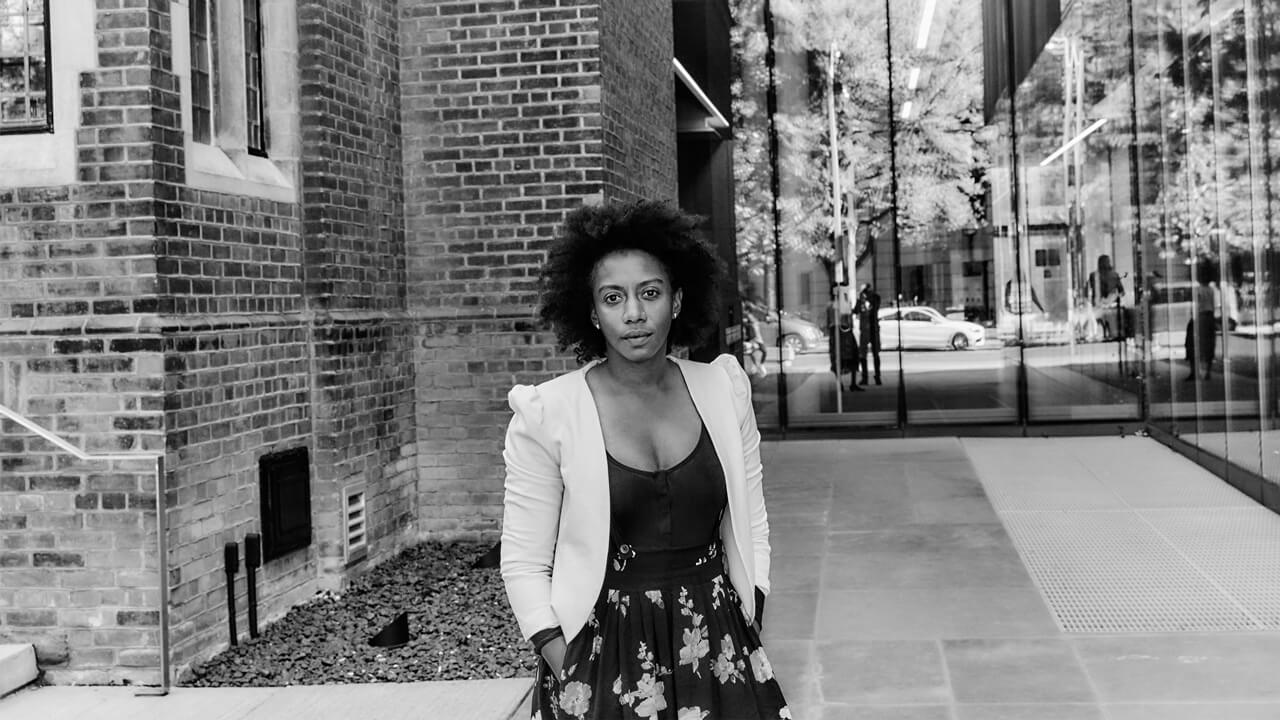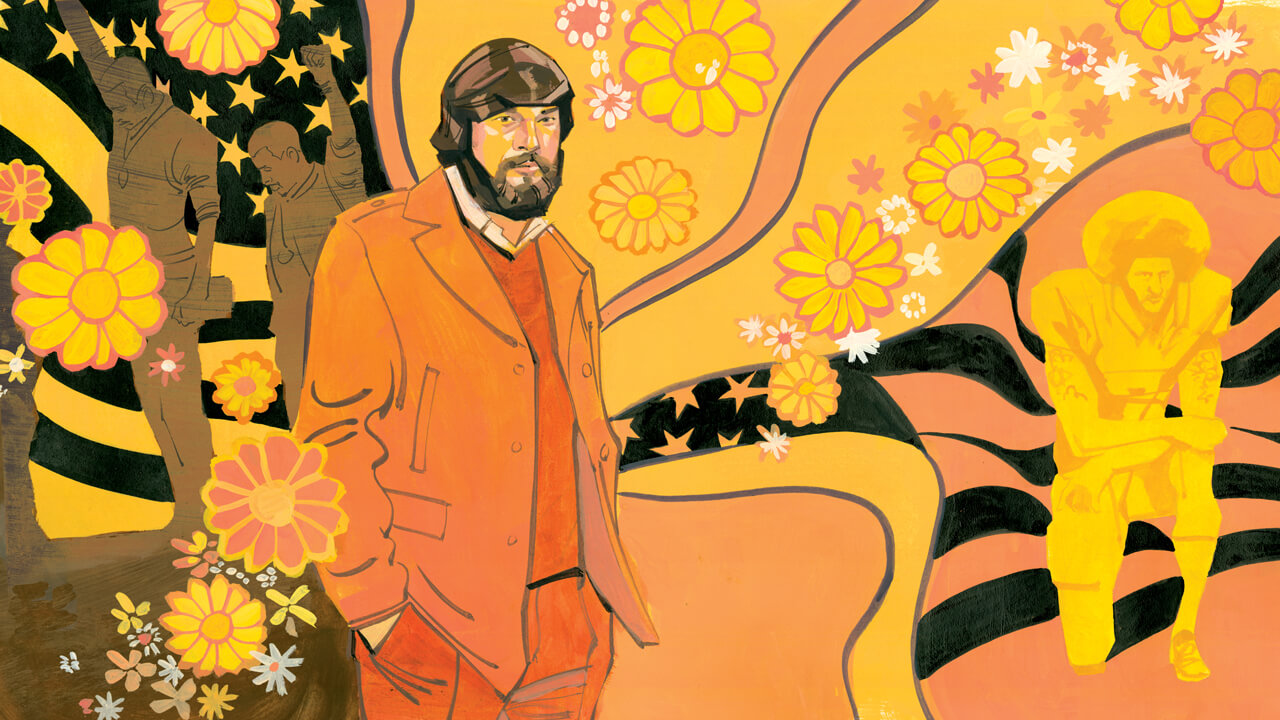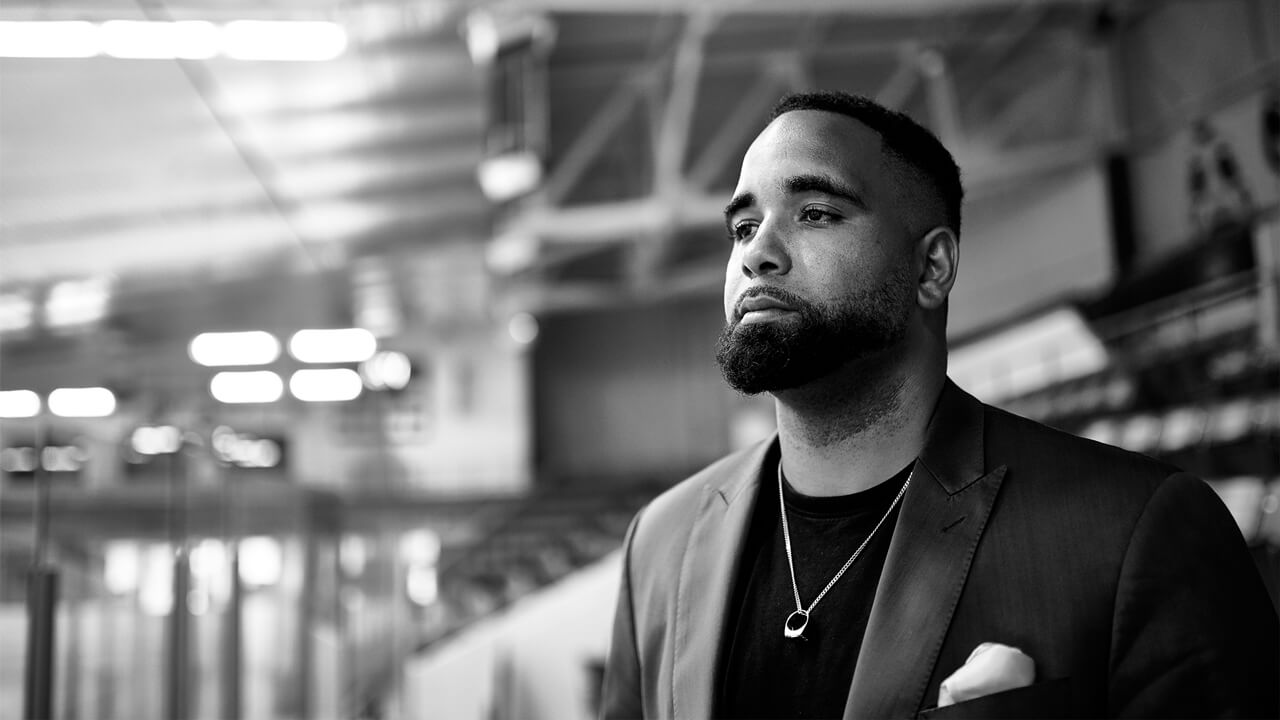Bob Kendrick sat in the mezzanine of the Gem Theater in Kansas City, Mo., with a platter of ribs. He was trying to savour the local barbecue staple, but found it tough to do with memories of his past striking him like a hammer.
These were good memories, though. Kendrick recalled his days playing baseball in the sandlot, imitating the batting stance of his favourite player. He pictured himself as a 12-year-old kid watching on the television as his hero made history by breaking a fabled home run record.
Now, in 1999, Kendrick was sharing ribs with that same man — Henry “Hank” Aaron.
“I was thinking it doesn’t get much better than that for this kid from Crawfordville, Georgia,” Kendrick says. “And after that, every time Mr. and Mrs. Aaron would see me, the first thing they would say was, ‘You didn’t bring any ribs with you?’”
Rogers is on a journey to build a more inclusive future for our team members, customers and communities across Canada. For more info on how, click here.
Earlier in the day, Kendrick had given Aaron a tour of the Negro Leagues Baseball Museum (NLBM) as part of a celebration to mark the 25th anniversary of the Hall of Famer eclipsing Babe Ruth’s 714 homers.
Kendrick was understandably nervous — he’d even had trouble deciding on an outfit to wear that morning — but it wasn’t long before he settled in to his task. At one point, he showed Aaron a black-and-white photograph of himself at 18 years old. It was taken at a train station in Mobile, Ala., just as Aaron was about to leave home, likely for the first time, to join the Indianapolis Clowns of the Negro American League.
There was a small duffle bag near his feet, and it contained some clothes, $1.50 and a ham sandwich that Aaron’s mother made him before he left to chase his dream. The image serves as a reminder of the icon’s humble beginnings before major-league stardom arrived.

These days, through his current role as president of NLBM, the now 58-year-old Kendrick works to preserve such important memories. And following a year that produced a stark racial awakening in North America, his work is more important than ever.
In the lead-up to Black History Month, Sportsnet caught up with Kendrick to discuss the recent passing of Aaron, MLB’s decision to reclassify the Negro Leagues, the importance of his museum and more.
Sportsnet: How did Mr. Aaron’s passing affect you?
Kendrick: Oh, it was devastating. My heart was heavy and it still is. It’s rare in this life that you get to have a relationship with someone who was your sports hero. Your idol. And then sometimes when you meet your idol, they don’t always live up to what you thought they were. But in the case of Henry Aaron, he far exceeded anything that I could have ever imagined. And I still pinch myself to understand that I had an opportunity to know him and to spend time with him. I think any of us who spent time with Henry Aaron was better as a result. His passing, because it was so unexpected, really threw me for a loop. It’s a tremendous loss for the Negro Leagues Baseball Museum, for the Negro Leagues family. And for me, personally, a devastating loss.
What did he mean to the museum?
He was, in many ways, that [photo above]. It was almost a validating point inside Major League Baseball because there’s still a lot of visitors who come here and did not know that Henry Aaron’s career began in the Negro Leagues. When they get to that picture and learn that an 18-year-old Henry Aaron started his career in the Negro Leagues, all of a sudden, it helps validate all the other great players that [are in the museum] and maybe you were a little bit skeptical of. Because you know what Henry Aaron accomplished at the major-league level. It’s been well documented.
Baseball gave him a platform, but it cannot define who Henry Aaron was. Henry Aaron was a civil rights icon. Henry Aaron was a philanthropist, a humanitarian, a tremendous businessman who used his life to help those who had been marginalized in this country continue the quest for equality. To me, Henry Aaron the man will always be bigger than Henry Aaron, the baseball player, and Henry the baseball player is one of the greatest to ever play this game.

Speaking of a push for equality, how has the past year’s racial-justice movement in America impacted the museum?
It impacted us in a positive way. In this kind of strange twist of fate, people started to turn to the Negro Leagues Baseball Museum for thought leadership. And it was with the understanding that the [it] is a social justice museum. It’s a civil rights museum — just seen through the lens of baseball. But more importantly, it is triumph over that adversity. And that is important because I think if you want to fully understand the Black experience in this country, it can’t just be the downtrodden aspect of our ascent and quest for equality.
You see the shackles of having been enslaved people. You see the water hoses sprayed on me, the police dogs released on me, the police brutality that still manifests itself in this country to this very day. Those very painful images. But my success stories are just as important, and those have not been seen, and the Negro Leagues is just one example of those great, Black success stories. See, that’s where commonality comes into play. Most people cannot relate to my struggles. They may be able to empathize, but they can’t relate to it. But you can relate to my success story.
And so, we’ve kind of become that bridge. And that’s part of what the museum, long term, had always wanted to be. We want to help bridge the racial divide that, sadly, has seemingly become wider in this country. Maybe through the winning spirit of the Negro Leagues, we can do that.
Can you tell me more about the thought leadership? What exactly does that look like?
It has led to a lot of programs I’ve been leading around diversity, inclusion and equity, and those are built around the story of the Negro Leagues. People started to look at what was happening internally at their companies. And they wanted to make sure that their employees understand the importance of diversity and inclusion and equity. And if they were already implementing them, they were looking at ways to reinforce. If they weren’t implementing, they were looking at the museum to help them implement. And what the story of the Negro Leagues does is it’s a very palatable way to open up this dialogue, because it’s baseball. And so, it makes that conversation a little easier.
But as I stress all the time, we have to get more comfortable being uncomfortable. It’s not easy to talk about race. We don’t like to talk about race. And I think when we don’t talk about it, we believe that that means [discrimination] is not happening, and we know that’s not the case. And so, we could take this story, this very triumphant story, and it’s a wonderful entree to a broader discussion about race, diversity, inclusion, equality, tolerance and respect.
So would you say the museum has taken on greater responsibility now, more than ever?
Oh, there’s no question. But we wanted that responsibility. We want to be the place where these conversations around race and sports emanate, because that’s what our story is all about. So, yeah, we have an important mission to preserve, celebrate, educate and illuminate this history. But the life lessons that stem from this story is what makes this museum so special. And that’s where the relevancy of the work that we do comes in, because the challenge is, “How do we continue to make this history relevant, because Negro Leagues baseball hasn’t been played in 60 years?” But the life lessons that stem from the story are just as significant right now, maybe more than ever before.

MLB recently decided to reclassify the Negro Leagues as part of the majors. What are your thoughts on that?
When [MLB] approached me initially about it, I can’t exactly say I was enamoured. But I was coming from the wrong place, and I had to realize this: I’m glad in my old age I can see the errors in my own ways, because I looked at it from the standpoint [where] I got a little bit [heated]. “We don’t need you to validate us.” That was my position, because I knew so many of these players. They were very self-assured. They knew how good they were. They knew how good their league was. And quite frankly, the major leaguers knew how good they were.
But I had to literally step outside of myself and look from outside in to fully understand and accept what this meant for historical purposes. This was more about atonement, acknowledgment and recognition, not necessarily “validating” the talent, but recognizing what they had contributed both on and off the field. And so, when I stepped out of myself and looked at it from that perspective, I was elated with the announcement, but I had to work my way there. And it is significant. And I am thrilled that it was so tremendously received by baseball fans. Now, you can never reduce the Negro Leagues to just stats. Stats in this case, for me, are more contextual. They help provide a framework, but they’ll never tell the real story.
What helped you work your way there to arrive at the point that this is ultimately a good thing?
I’m so close to this — I’m looking at it from an insider’s purview. I had to think about how the outside public was going to see this and what it meant for the annals of history. And then I came to the realization that Major League Baseball, in one day, did what the Negro Leagues has been trying to do for 30 years, and that’s ultimately rewrite the pages of American history books. Now, they did it by correcting their own history, but in essence, they started the process of rewriting American history, because I think most people agree that if you know the story of baseball, you essentially know the story of this country. They are that closely intertwined. The Negro Leagues are important parts of that story of America. And this is a major step in the right direction, and it will help us immensely as we continue to illuminate this story.

Do you feel the weight of potentially educating future baseball fans who are more likely to be hearing some of these names from the Negro Leagues for the first time?
No question. Because the sidebar to all this excitement was the fear from some that this history would get “whitewashed” over time. That after Major League Baseball’s atonement and alteration of its own history — 20 years from now, 30 years from now — there will be a new baseball fan that sees these names integrated right alongside of those legendary major-league icons and think that it’s always been that way. And we don’t want them to believe that has always been that way. It’s important that they understand that there were two separate leagues, and it wasn’t because the Black and Hispanic players wanted it that way. It was because it had to be that way and that they created their own league that was as good as any league. It’s important. So, it makes this museum, I think, that much more important.
Why is it critical for people to know that Black and Hispanic players created this league on their own? Does that show empowerment?
Absolutely it does. And to me, the premise is real simple: “[If] you won’t let me play with you, then I’ll just create my own.” And in this country, that is the American spirit at its absolute finest. So, while America was trying to prevent them from playing, the American spirit is what essentially empowered them to play.
“I’ll show you. You won’t let me play with you? I’ll create my own. And then mine will become just as good, some will say even better, than yours.”




